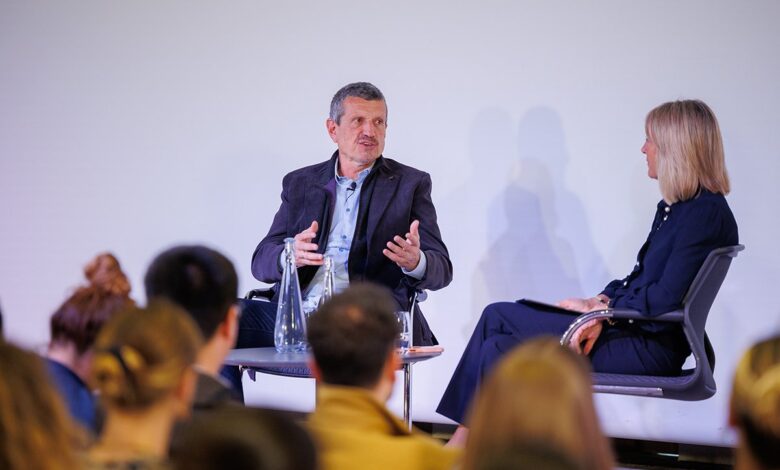Keynote Killer: Interactive Speaker Formats Surge 800% as Attention Spans Shrink

Interactive formats surge 800% as conversational keynotes, micro sessions and podcast-style presentations revolutionise business learning
The corporate speaking industry is experiencing its most significant transformation in decades, with traditional one-hour keynotes giving way to conversational formats and interactive micro sessions, according to research from JLA Speakers.
The London-based agency’s booking data reveals interactive formats rising from just 23 bookings in 2018 to 208 in 2024 – an increase of over 800%. But the evolution runs deeper, encompassing entirely new approaches driven by social media-influenced attention spans and hybrid working patterns.
The Social Media Effect
JLA’s account managers report that changing attention spans are driving demand for more varied formats alongside traditional presentations. “Conversational, podcast-style and interactive sessions offer different engagement opportunities that complement the strong foundation of keynote content,” explains one senior team member.
While traditional 30-40 minute presentations remain highly popular and effective, there’s been a notable shift in audience expectations. The conventional 75/25 split between presentation and audience questions has evolved, with many events now operating closer to 50/50, reflecting growing appetite for dialogue alongside expert content delivery.
Conversational Keynotes Take Centre Stage
Fireside chats have emerged as a particularly popular alternative, with clients who traditionally booked keynotes for annual events now specifically requesting this more intimate format. The appeal is two-fold: speakers require less formal preparation whilst clients receive guaranteed one-of-a-kind content.
Leadership speaker Blaire Palmer, who features prominently in JLA’s roster, explains: “Audiences really want to interact with the ideas in a keynote. The keynote shouldn’t be a passive experience – if content is thought-provoking or challenging, they want to talk about it with the speaker and colleagues.”
Podcast Culture Influence
The influence of podcast culture is particularly evident, with clients not only booking established podcast personalities but requesting speakers replicate the “relaxed-formal” podcast interview style. This trend extends to speaker marketing, with professionals increasingly leveraging LinkedIn and short-form video content, which in turn influences client expectations of event formats.
Collaborative Development
Event briefs are becoming increasingly fluid, with initial concepts evolving significantly through collaborative discussions. “Their starting point isn’t their end point,” notes a JLA team member. “We discuss how presentations work, what’s possible, how audiences can be involved.”
This has led to more tailored sessions, with speakers offering multiple angles and responding to client feedback throughout development.
Premium and Virtual Innovation
Larger corporations are combining formats, particularly pairing fireside chats with exclusive meet-and-greet sessions for VIP attendees, senior executives, or key clients depending on the event’s focus. Meanwhile, virtual presentations remain popular despite the return to in-person events, driven by hybrid working and geographical considerations.
Palmer recently pioneered a hybrid approach, pre-recording a keynote streamed to multiple office locations followed by a live virtual Q&A. “People didn’t have to gather in one place but still got the in-person experience and interaction.”
Workshop Revolution
Interactive workshops represent the fastest-growing segment, with speakers increasingly offering these as standard options. The emphasis extends beyond full workshops to presentations incorporating polls, audience questions and collaborative tasks.
“More than ever, people want to feel they’re getting something that no one else is getting,” observes a JLA account manager. Panel discussions are also gaining favour, with some clients finding it more attractive to invest in multiple speakers having a discussion rather than a single presenter delivering content – valuing the dynamic exchange of ideas over individual expertise.
Measurable Business Impact
The shift towards interactive formats reflects growing emphasis on return on investment in corporate learning. Palmer emphasises: “There’s no point inviting a speaker to inspire an audience and then see no action back in the business. I wouldn’t be doing my job if the audience weren’t ‘activated’ to do something different afterwards.”
As attention spans continue to fragment and hybrid working becomes permanent, the speaking industry shows no signs of reverting to traditional formats. The data suggests that by 2025, interactive and conversational formats may become the standard rather than the exception.
Source link





